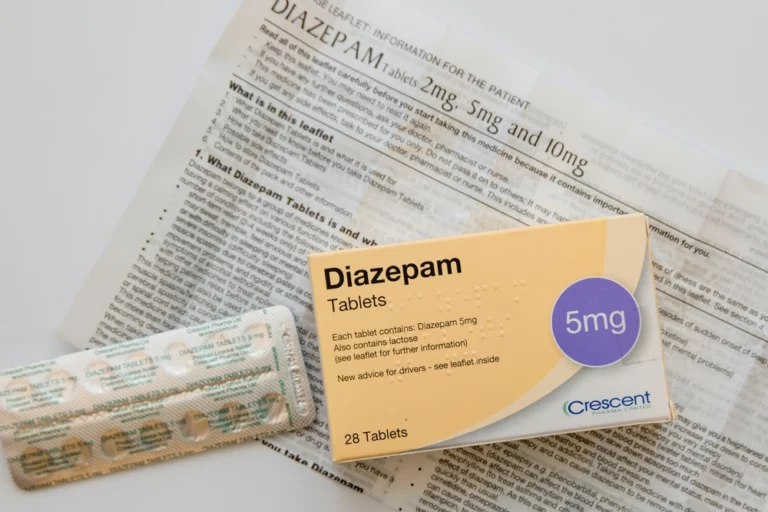How can you identify the signs of Xanax overdose? First, let’s look at what Xanax is and how it is used in the world of mental health. Xanax, known generically as alprazolam, is a prescription benzodiazepine medication widely used to treat anxiety disorders, panic attacks, and other mental health conditions. As a central nervous system (CNS) depressant, it works by enhancing the effects of gamma-aminobutyric acid (GABA), a neurotransmitter that promotes relaxation and reduces excessive brain activity.
While Xanax is highly effective when taken as prescribed under medical supervision, its potential for misuse, dependence, and overdose is a significant concern. Misuse—such as taking higher doses than recommended, combining it with other depressants like alcohol or opioids, or using it without a prescription—can lead to dangerous consequences, including respiratory depression, coma, or even death.
Recognizing the signs of a Xanax overdose, such as extreme drowsiness, confusion, slowed breathing, or loss of consciousness, is crucial for prompt medical intervention. Understanding the risks associated with Xanax misuse and knowing how to respond in an overdose situation can save lives and prevent long-term health complications.

Understanding Xanax and Its Therapeutic Role
Xanax (alprazolam) is a potent prescription medication belonging to the benzodiazepine class of drugs, which function by enhancing the activity of gamma-aminobutyric acid (GABA), the brain’s primary inhibitory neurotransmitter. By binding to GABA-A receptors, Xanax amplifies GABA’s calming effects, effectively slowing down overactive neural signals and producing a sedative, anxiolytic (anti-anxiety), and muscle-relaxing response.
This mechanism makes Xanax highly effective for treating generalized anxiety disorder (GAD), panic disorder, and acute stress reactions, as it rapidly alleviates symptoms like excessive worry, tension, and panic attacks. However, due to its strong depressant effects on the central nervous system (CNS), misuse—whether through excessive dosing, prolonged use, or combining it with other depressants like alcohol or opioids—can lead to dangerous consequences, including a Xanax overdose.
Recognizing the signs of Xanax overdose is critical, as symptoms such as extreme drowsiness, confusion, slurred speech, impaired coordination, slowed or shallow breathing, and unconsciousness can escalate quickly into life-threatening respiratory depression or coma. In severe cases, the signs of Xanax overdose may also include bluish lips or fingernails (cyanosis), unresponsiveness, and even death, particularly when mixed with other substances.
Because of these risks, understanding the signs of Xanax overdose and seeking immediate medical attention can mean the difference between recovery and fatal consequences. Additionally, long-term use or abrupt discontinuation can lead to dependence and withdrawal symptoms, further underscoring the importance of using Xanax strictly as prescribed by a healthcare provider.
Primary Uses of Xanax
Xanax (alprazolam) is primarily prescribed for the treatment of anxiety disorders, panic attacks, and related mental health conditions, offering rapid relief for symptoms like excessive worry, racing thoughts, and physical manifestations of anxiety such as rapid heartbeat and sweating. In some cases, healthcare providers may also prescribe Xanax off-label to manage severe insomnia or acute stress-related conditions, particularly when other treatments have proven ineffective.
However, due to its potent sedative effects and fast-acting nature, Xanax carries a high risk of dependence, tolerance, and misuse, making it one of the most commonly abused prescription medications. When taken in higher doses than prescribed, used without medical supervision, or combined with other depressants like alcohol or opioids, the risk of a Xanax overdose increases significantly.
Recognizing the signs of Xanax overdose—such as extreme drowsiness, confusion, slurred speech, impaired motor control, and slowed or shallow breathing—is crucial for timely medical intervention. In more severe cases, the signs of Xanax overdose may progress to respiratory depression, loss of consciousness, or even coma, particularly when mixed with other substances that suppress the central nervous system.
Because the signs of Xanax overdose can escalate rapidly, it is essential for users, caregivers, and medical professionals to remain vigilant, especially in cases of long-term use or polydrug abuse. Additionally, abrupt discontinuation after prolonged use can trigger severe withdrawal symptoms, including rebound anxiety, seizures, and heightened sensitivity to stimuli, further complicating the risks associated with this medication.
Public awareness of the signs of Xanax overdose is a critical component of harm reduction, as early recognition and emergency response can prevent fatal outcomes. Medical professionals emphasize the importance of using Xanax only as prescribed, avoiding alcohol and other sedatives while taking it, and seeking help immediately if any signs of Xanax overdose appear. By understanding both the therapeutic benefits and the serious risks of Xanax, patients and healthcare providers can work together to minimize the potential for misuse and overdose while still addressing the symptoms of anxiety and panic disorders effectively.

Identifying the Signs of Xanax Overdose
An overdose occurs when an excessive amount of a drug is ingested, overwhelming the body’s capacity to metabolize and process it. Xanax overdose can manifest through various symptoms that necessitate immediate medical attention.
Physical Indicators
- Excessive Drowsiness: Profound sleepiness or an inability to stay awake can be an early sign of overdose.
- Confusion and Mental Fog: The individual may seem confused, struggle to understand their surroundings, or appear mentally distant.
- Lack of Coordination: Evidence of clumsiness, difficulties in movement, or a loss of balance may be apparent.
Severe Warning Signs
- Breathing Challenges: Slower or labored breathing is particularly alarming, especially when Xanax is combined with other depressants such as alcohol.
- Unresponsiveness or Loss of Consciousness: Fainting or failure to respond to stimuli indicates an urgent need for emergency help.
- Coma: In severe cases, an overdose may result in a comatose state, posing life-threatening risks.
Strategies to Prevent Xanax Overdose
The best way to prevent Xanax overdose is through responsible use and awareness of associated risks.
Adhere to Prescribed Guidelines
- Follow the exact dosage and frequency as advised by a healthcare provider.
- Avoid sharing your medication or combining it with alcohol and other drugs without medical approval.
Promote Awareness and Education
- Educate yourself and those around you about the dangers and signs of Xanax overdose.
- Encourage open discussions about any misuse or concerns related to Xanax use.
Engage in Open Communication with Healthcare Providers
- Regularly consult with your healthcare provider regarding your medication use and report any adverse effects or concerns you have.
- Seek professional guidance if you suspect dependence or misuse of Xanax.

Responding to a Xanax Overdose
If you suspect an overdose situation, immediate medical intervention is crucial. Here’s how to respond effectively:
Emergency Actions
- Contact Emergency Services: Call for emergency help as soon as possible.
- Share Information: Provide detailed information about the dosage taken and the time and other substances involved.
First Aid Measures
- Keep the individual awake if possible while waiting for help.
- If unconscious but breathing, position them in recovery to prevent choking.
Medical Treatment Options
- Activated Charcoal: Sometimes used to limit drug absorption in the stomach.
- Additional Interventions: Medical professionals may administer IV fluids, respiratory support, or medications like Flumazenil to counteract benzodiazepine effects.
Frequently Asked Questions about Xanax Overdose
What steps should I take if I suspect a Xanax overdose?
If you suspect someone is experiencing a Xanax overdose, immediately call emergency services (911 or your local emergency number)—every second counts in preventing life-threatening complications. When speaking with dispatchers, remain calm but provide as much critical information as possible to ensure first responders are prepared.
Clearly state the person’s current condition, including any visible signs of Xanax overdose such as unresponsiveness, shallow breathing, bluish lips or fingertips (cyanosis), or extreme drowsiness. If known, report key details like the approximate time the Xanax was taken, the dosage consumed (e.g., number of milligrams or pills), and whether other substances (alcohol, opioids, etc.) were involved.
Don’t assume the person will “sleep it off”—overdoses can worsen rapidly. While waiting for help, keep the individual awake and upright if possible, monitor their breathing, and be prepared to administer CPR if they stop breathing. Do NOT leave them unattended, as their condition could deteriorate suddenly. If empty pill bottles or drug paraphernalia are nearby, secure them (without risking your safety) to show medical personnel—this helps identify the substances involved.
Paramedics and ER teams need this information to administer the right treatments, such as flumazenil (a benzodiazepine reversal agent), IV fluids, or respiratory support. Withholding details—even unintentionally—could delay life-saving care. Your quick action and clear communication could mean the difference between recovery and tragedy. After the crisis, ask healthcare providers about overdose prevention resources, such as naloxone (if opioids were involved) or addiction support programs, to reduce future risks.
Does mixing Xanax with other substances heighten overdose risk?
Yes, Xanax becomes particularly dangerous when combined with alcohol, opioids, or other central nervous system depressants, as these combinations dramatically increase the risk of severe respiratory depression, coma, and fatal overdose. The signs of Xanax overdose become much more likely and more severe when the drug is mixed with other substances, as they work synergistically to suppress breathing and brain function.
When someone takes Xanax with alcohol or opioids, the signs of Xanax overdose may appear more rapidly and with greater intensity, including extreme drowsiness, confusion, slurred speech, impaired coordination, and dangerously slowed breathing. In these cases, the signs of Xanax overdose can quickly escalate to life-threatening levels, potentially leading to unconsciousness, respiratory failure, or death if immediate medical attention is not sought.
It’s crucial to recognize that the signs of Xanax overdose may be harder to identify when multiple substances are involved, as symptoms can overlap or mask each other. For example, someone who has combined Xanax with opioids might show severe drowsiness and pinpoint pupils, while adding alcohol could worsen confusion and vomiting.
The presence of multiple depressants in the system makes the signs of Xanax overdose more complex and challenging to treat, requiring urgent medical intervention. Medical professionals emphasize that polydrug use involving Xanax is one of the most common scenarios leading to fatal overdoses, as the combined effects overwhelm the body’s ability to maintain vital functions.
If you suspect someone is exhibiting signs of Xanax overdose, especially in combination with other substances, call emergency services immediately. Do not wait for all symptoms to appear, as the situation can deteriorate rapidly. While waiting for help, keep the person awake and monitor their breathing closely. If they become unresponsive, be prepared to perform rescue breathing or administer naloxone if opioids are involved. Remember, the signs of Xanax overdose demand immediate action—delaying treatment could have deadly consequences. Prevention is key: never mix Xanax with other depressants, and always use medications exactly as prescribed to minimize the risk of overdose.
How can Xanax misuse be prevented?
Only use Xanax as prescribed, and engage in open dialogues with healthcare providers regarding the medication’s risks.
Understanding the signs of Xanax overdose and taking proactive measures can significantly enhance safety. If you or someone you know is grappling with Xanax misuse, reaching out for professional support is an important step toward well-being and recovery.

Reach Out to Knoxville Recovery Center Today
If you or a loved one is struggling with Xanax abuse, help and healing is available at Knoxville Recovery Center. For more information about our addiction recovery services, contact us or call directly to speak with a member of our dedicated team.







